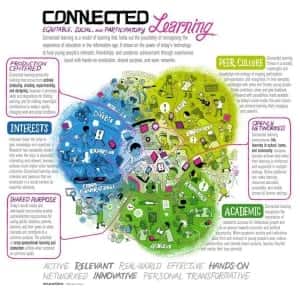In recent years, interest in international “virtual exchange” (IVE) or internet communication has grown as more people across the world are getting smart phones and laptops that give them access to the internet. More schools and universities are getting in on the act, as are international organizations devoted to education and cultural exchange. However, a lot of the IVE now going on has a participation problem.
Throughout human history, international affairs have largely been the province of a privileged few. Travel is prohibitively expensive for most people. Those able to travel abroad tend to have the discretionary income to do so, or they are employed or supported by organizations that allow them to travel. This, of course, does not include refugees compelled to leave their homes due to violence, disaster or the threat thereof. Nor does it include poor migrants compelled to leave their countries for lack of economic opportunity to support themselves and their families.
IVE opens up exciting opportunities to engage far more people in international affairs. Yet most current virtual exchange happens between relatively privileged people. In the realm of cultural and educational exchange, IVE tends to occur between students, classrooms, or social groups who have more resources (e.g., computers, high speed internet, projectors, skilled staff), and more interest in IVE precisely because they have more formal education and/or family experience with foreign affairs.
Further, because international virtual exchange is still uncommon, even within the more privileged half of societies, IVE organizations keen on reporting large numbers of exchanges, participants, and positive results from their exchanges to sustain and grow their funding, often have little financial interest to engage people lower down the socio-economic scale.
Engaging people with less formal education and little if any experience of foreign affairs does tend to be more difficult. In Learning Life’s experience thus far with our Citizen Diplomacy Initiative (CDI), many of our lower-income families travel little within their city, let alone out of state or out of the country. They also know little to nothing about foreign countries or peoples. Indeed, many of the children with whom we work cannot geographically distinguish what is American and what is foreign. That combination of inexperience and ignorance does not naturally spur any human being to want to learn more. In brief, we tend to like what we know, not what we don’t know.
Compounding the challenge are the countless eye-catching commercial distractions — music videos, movies, TV shows, video games, etc. that trade in speed, violence, sex, and/or high drama to draw people into their profitable fictions. That relentless commercial tidal wave makes it hard for any teacher to compete with the traditional, slow or static instruments for learning reality, local to global: sustained, deliberate conversation and the printed word.
 But our commitment to tackling inequality and innovating education does not incline us to take the easier road, working with more privileged people interested in IVE. To reach the harder to reach though, we will be experimenting with a neighborhood approach. Rather than recruit lower-income families from across a city, or wherever we can find them, we will focus recruitment on particular lower-income neighborhoods. In doing so, we will cultivate connections with larger organizations with ties to those neighborhoods to bring more resources (funds, volunteers, information, meeting spaces, food, internet access, etc.) to bear on our work of nurturing global citizenship among lower-income families.
But our commitment to tackling inequality and innovating education does not incline us to take the easier road, working with more privileged people interested in IVE. To reach the harder to reach though, we will be experimenting with a neighborhood approach. Rather than recruit lower-income families from across a city, or wherever we can find them, we will focus recruitment on particular lower-income neighborhoods. In doing so, we will cultivate connections with larger organizations with ties to those neighborhoods to bring more resources (funds, volunteers, information, meeting spaces, food, internet access, etc.) to bear on our work of nurturing global citizenship among lower-income families.
The potential benefits of a neighborhood approach are manifold. The close, repeated social interaction that comes with focusing on specific neighborhoods can make it easier to connect with new families, gain their trust, share resources with them, and mobilize them for CDI dialogues and activities. Working with neighboring rather than dispersed families can also occasion more beneficial “spillover” of newfound knowledge, skills and resources when families share what they gain through CDI with their neighbors.
A recent development in the relationship of two neighboring families participating in CDI illustrate this last point in what might be called a “virtuous neighborhood effect.” These two families live about three blocks apart, yet might have never met if not for CDI. At this point though, they have participated in about ten local learning activities (e.g., museum and restaurant visits) and international dialogues together. That repeated interaction recently led John, the father of one family — unprompted by any of us at Learning Life — to invite Alex, the only son in the other family, to an all-day excursion at a local amusement park with John and his daughter, Joanne. Alex, who often feels left out at home, loved it. The parents in these two families have since exchanged telephone numbers, and are on a first-name basis. John also plans to take Alex on more excursions in the future, and to teach him how to drive. (Note: I use pseudonyms here to protect the privacy of the participants.)
This example has nothing yet to do with global citizenship, but more sharing and caring like this — a direct spillover effect of CDI — can help strengthen a neighborhood, and facilitate all kinds of collective goals, including global citizenship. Social scientists call the sharing, caring and trust embodied in such connections “social capital.” Research shows that individuals and communities rich in social capital tend to be healthier, safer, and more prosperous.
Neighborhood organizing for IVE and global citizenship is all the more important in lower-income neighborhoods, where there tends to be less social capital, that is, where neighbors tend to trust, care and share less. And so, while other organizations pursue IVE with more privileged populations, Learning Life is purposefully taking the harder road, and moving toward a neighborhood approach as we begin with a few lower-income blocks in Ward 8, the poorest ward of Washington D.C., as well as with lower-income neighborhoods in other nations where we work. We don’t expect quick results. That’s why we’re in this for the long-term. We will keep you posted as our neighborhood organizing progresses!
Paul Lachelier, Ph.D.
Founder, Learning Life
P.S. For more on our developing, locally-oriented approach, click here.



